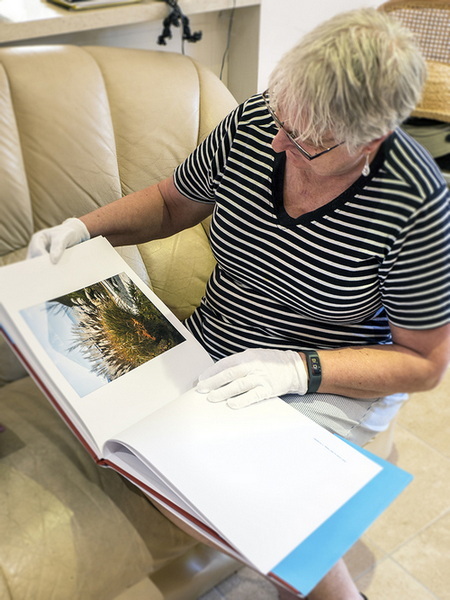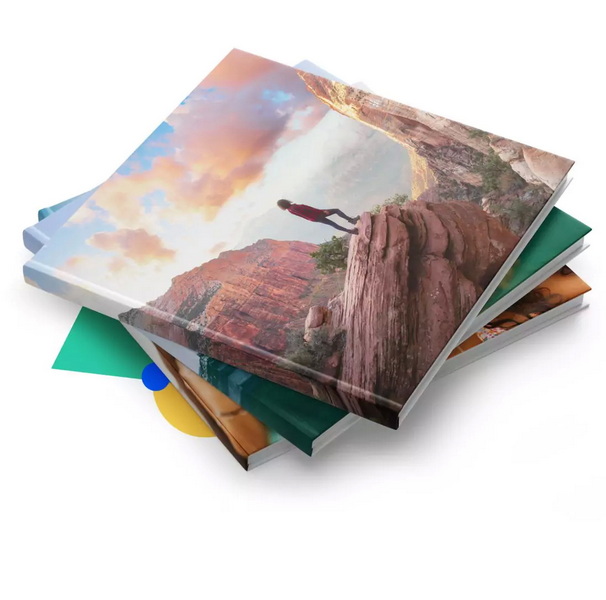Content Menu
● Introduction
● Understanding the Purpose of Your Photo Book
● Selecting Your Images
>> Curate Your Collection
>> Edit Your Photos
● Choosing the Right Printing Service
>> Local Print Shops vs. Online Services
>> Key Factors to Consider
● Designing Your Photo Book Layout
>> Layout Tips
>> Using Templates vs. Custom Designs
● Selecting Paper Type and Size
>> Common Paper Types
>> Popular Sizes
● Choosing Binding Options
>> Common Binding Types
● Proofing Your Book
>> Proofing Tips
● Placing Your Order
>> Final Steps
● Marketing Your Photo Book (Optional)
>> Social Media Promotion
>> Online Storefronts
● Conclusion
● Related Questions
>> 1. What software can I use to design my photo book?
>> 2. How do I choose the right printer for my photo book?
>> 3. What are some tips for selecting images?
>> 4. What binding options are available for photo books?
>> 5. How can I ensure color accuracy in my printed photos?
● Citations:
Introduction
Creating a photo book is an excellent way to preserve memories, celebrate special occasions, or showcase your photography skills. Whether you're looking to create a personal keepsake or a professional portfolio, the process of printing a photo book involves several steps, from selecting images to choosing the right printing service. This comprehensive guide will walk you through the entire process of creating and printing a photo book, ensuring that your final product is both beautiful and meaningful.

Understanding the Purpose of Your Photo Book
Before diving into the technical aspects of printing a photo book, it's essential to clarify its purpose. Are you creating a family album, a travel journal, or a portfolio for your photography work? Understanding the goal of your photo book will guide your choices throughout the process.
- Family Album: Focus on capturing memories from family events, vacations, and milestones. This type of album can include photos from birthdays, holidays, and everyday moments that hold sentimental value.
- Travel Journal: Document your adventures with photos and narratives about each location. Include maps, ticket stubs, and notes to give context to your travels.
- Photography Portfolio: Showcase your best work to attract clients or display your artistic vision. This may include various themes such as landscapes, portraits, or street photography.
Selecting Your Images
The first step in creating a photo book is choosing the images you want to include. This can be a fun yet challenging task, as it involves sifting through potentially hundreds or thousands of photos.
Curate Your Collection
Go through your photo library and select images that resonate with the theme of your book. Aim for a mix of wide shots and close-ups to provide variety. Consider the following tips:
- Quality Over Quantity: Choose only the best images that tell your story effectively.
- Diversity: Include a range of subjects and compositions to keep the viewer engaged.
- Emotional Impact: Select photos that evoke feelings or memories; these will resonate more with viewers.
Edit Your Photos
Use photo editing software like Adobe Photoshop or Lightroom to enhance your images. Adjust brightness, contrast, and saturation to ensure they look their best in print. Here are some editing tips:
- Crop for Composition: Remove distractions from the edges and focus on the main subject.
- Color Correction: Ensure colors are true to life; this is especially important for skin tones in portraits.
- Sharpening: Apply sharpening judiciously to enhance details without introducing noise.
Choosing the Right Printing Service
Once you have selected and edited your images, it's time to choose a printing service. There are numerous options available, ranging from local print shops to online services.
Local Print Shops vs. Online Services
- Local Print Shops: These can provide personalized service and allow you to see samples of their work. You can discuss your project in person and get immediate feedback.
- Online Services: Websites like Blurb, Shutterfly, and Photobooks Pro offer user-friendly platforms for creating photo books with various templates and design options. They often have extensive customer reviews which can help you gauge quality.
Key Factors to Consider
When selecting a printing service, consider the following factors:
- Quality: Look for services that use high-quality paper and printing techniques. Check reviews for print quality feedback.
- Pricing: Compare prices across different services to find one that fits your budget without compromising quality.
- Customization Options: Ensure that the service allows for customization in terms of layout, cover type (hardcover vs. softcover), size (small vs. large), and paper type (glossy vs. matte).
Designing Your Photo Book Layout
Creating an appealing layout is crucial for presenting your photos effectively. You can either use templates provided by printing services or design your layout from scratch using software like Adobe InDesign or Microsoft Publisher.
Layout Tips
- Balance: Ensure that each page has a good balance between images and white space. Too many images can overwhelm the viewer while too little can make pages feel sparse.
- Flow: Arrange photos in a way that tells a story or follows a chronological order. This helps guide the viewer through the narrative you wish to convey.
- Captions and Text: Consider adding captions or short narratives to provide context for each image. This can enhance emotional engagement by sharing personal anecdotes or insights related to the images.
Using Templates vs. Custom Designs
Many online services offer pre-designed templates that can simplify the layout process:
- Templates: These are great for beginners who may not have design experience. They often come with placeholders for text and images.
- Custom Designs: If you have specific ideas in mind or want more creative freedom, designing from scratch allows you to create something truly unique.

Selecting Paper Type and Size
The choice of paper type and size can significantly affect the overall look and feel of your photo book.
Common Paper Types
- Glossy Paper: Enhances color vibrancy and is ideal for photographs with rich colors; however, it may reflect light.
- Matte Paper: Offers a more subdued look and is less prone to fingerprints; it's also easier to write on if you want to add notes later.
Popular Sizes
Consider what size will best suit your content:
- Landscape (12” x 9”): Great for panoramic shots or travel books.
- Portrait (8.5” x 11”): A versatile option suitable for various themes.
- Square (8” x 8”): Ideal for Instagram-style layouts or equal emphasis on all images.
Choose a size that complements your images and fits well with your intended use of the book.
Choosing Binding Options
Binding is another critical aspect of photo book creation. The binding method affects durability and presentation quality.
Common Binding Types
- Casebound Binding: Offers durability with hard covers; ideal for professional portfolios or keepsakes meant for long-term preservation.
- Softcover Binding: More flexible; suitable for casual photo books that may be shared among family members or friends.
Consider how often the book will be handled when selecting the binding type:
- If it's meant for frequent use (like family albums), opt for more durable binding options.
- For display purposes (like portfolios), choose bindings that enhance visual appeal.
Proofing Your Book
Before finalizing your order, it's wise to proof your book. This step allows you to catch any errors in layout, text, or image quality.
Proofing Tips
1. Print Test Pages: If possible, print out a few sample pages on the same paper type you plan to use; this gives you an idea of how colors will appear in print.
2. Check Color Accuracy: Ensure that colors appear as expected by comparing them with what you see on-screen; this may involve calibrating your monitor beforehand.
3. Review Text Carefully: Make sure there are no typos or grammatical errors in captions or narratives; consider having someone else review it as well.
Placing Your Order
After finalizing your design and completing proofing, it's time to place your order. Most online services will guide you through this process seamlessly.
Final Steps
1. Review all details before submitting—double-check page numbers, image placements, text accuracy, etc.
2. Choose shipping options based on how quickly you need the book; expedited shipping may be available if you're on a tight deadline.
3. Keep track of your order confirmation number for future reference in case any issues arise during processing.
Marketing Your Photo Book (Optional)
If you're creating a photo book as part of a business venture—such as selling photography portfolios—consider how you'll market it once printed:
Social Media Promotion
Utilize platforms like Instagram or Facebook to showcase sneak peeks of your photo book before its release:
- Share behind-the-scenes content during its creation process.
- Engage with followers by asking them what they'd like to see featured in future books.
Online Storefronts
Consider setting up an online storefront where people can purchase copies directly:
- Websites like Etsy allow artists to sell their creations easily.
- Create an author page on platforms like Blurb where readers can find more about you and your work.
Conclusion
Printing a photo book is an enjoyable process that allows you to preserve memories creatively while showcasing your artistic talents. By following these steps—from selecting images through placing an order—you can create a beautiful keepsake that showcases your most cherished moments effectively.
Remember that each step is an opportunity for creativity; don't hesitate to experiment with layouts, designs, and themes until you find what resonates best with you! The final product should reflect not only visual beauty but also emotional depth—making it something you'll cherish for years to come.

Related Questions
1. What software can I use to design my photo book?
You can use software like Adobe InDesign, Photoshop, Microsoft Publisher, or online platforms provided by printing services such as Shutterfly or Blurb.
2. How do I choose the right printer for my photo book?
Look for printers that offer high-quality prints, competitive pricing, customization options tailored to your needs, and positive customer reviews regarding their print quality.
3. What are some tips for selecting images?
Curate images based on their relevance to the theme of the book—ensure diversity in composition while also considering editing adjustments for quality; prioritize emotional impact when making selections.
4. What binding options are available for photo books?
Common binding options include casebound (hardcover) and softcover bindings; choose based on durability needs versus aesthetic preferences depending on how frequently it will be used or displayed.
5. How can I ensure color accuracy in my printed photos?
Adjust colors in editing software before printing; consider printing test pages on similar paper types used during final production runs—this helps confirm visual fidelity before committing fully!
Citations:
[1] https://www.youtube.com/watch?v=K1a0_ZfaQCs
[2] https://bestbookprinting.com/how-to-print-a-photo-book-what-you-need-to-know/
[3] https://www.reddit.com/r/photography/comments/gnt5ro/about_to_get_my_first_photo_book_printed_what/
[4] https://www.journiapp.com/photo-book
[5] https://photobooks.pro
[6] https://aperture.org/editorial/how-to-produce-a-photobook/
[7] https://photobookpress.com/blogs/news/9-tips-for-getting-a-great-quality-print-of-your-photo-book
[8] https://www.simpleprints.com/photo-books
[9] https://photobookpress.com/collections/hardcover-photobooks
[10] https://www.reddit.com/r/AskPhotography/comments/ssvpc4/anyone_had_any_experience_making_their_own_photo/
[11] https://www.cvs.com/photo/photo-book
































